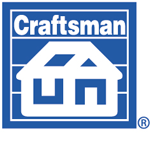Description

CEPS (Construction Equipment Productivity Software)

TraceAir
Comprehensive Overview: CEPS (Construction Equipment Productivity Software) vs TraceAir
TraceAir is a platform designed to enhance productivity in the construction industry by leveraging technology for efficient management and planning of construction sites. Here's a comprehensive overview focusing on primary functions, target markets, market share, user base, and key differentiating factors:
a) Primary Functions and Target Markets
Primary Functions:
-
Site Analysis and Monitoring: TraceAir provides detailed site analysis through drone-based topographic mapping and monitoring. This enables real-time tracking of earthwork progress and surface changes.
-
Volume Calculations: The software offers precise volume calculations for cut and fill, helping construction projects to control costs and resources efficiently.
-
Progress Tracking: Users can monitor project progress in real time, comparing actual site conditions with design plans.
-
Quality Control: Ensures quality and compliance with design specifications by providing accurate site data and visualizations.
-
Collaboration Tools: Facilitates communication and information sharing among project stakeholders, enhancing teamwork and reducing errors.
-
Data Integration: Integrates with other construction management solutions, providing a comprehensive view of projects by combining multiple data sources.
Target Markets:
- Civil Engineering Firms: Involved in infrastructure projects like roads, bridges, and highways.
- Construction Companies: Particularly those managing large-scale earthworks and site preparation.
- Real Estate Developers: Focused on large residential or commercial developments with significant site preparation needs.
- Municipalities and Government Agencies: Managing public works and infrastructure development projects.
b) Market Share and User Base
While specific data on market share and user base can be proprietary and challenging to obtain, TraceAir is part of a competitive niche within the construction technology sector. They focus on precision and efficiency in site management and earthworks, which sets them apart from broader construction management platforms.
Typically, TraceAir serves medium to large enterprises, given their need for sophisticated site management tools. Their user base is likely comprised of project managers, site engineers, and general contractors who require detailed spatial data and analytics to manage ongoing projects.
Compared to traditional methods or less specialized software, TraceAir provides high-value insights that can significantly reduce time and cost overruns, giving it a competitive edge in gaining and maintaining a substantial user base.
c) Key Differentiating Factors
-
Emphasis on Earthwork: Unlike general project management tools, TraceAir focuses deeply on earthworks and site preparation, offering advanced modeling and volume calculation capabilities.
-
Integration with UAVs: It utilizes drones for data collection, offering higher accuracy and more frequent updates than manual surveys.
-
User-Friendly Interface: Designed to be accessible to field personnel who may not have advanced technical skills in data analysis.
-
Speed and Accuracy: Provides high-speed data processing with accurate results, allowing teams to make informed decisions quickly.
-
Real-Time Data Availability: Offers cloud-based access to site data, enabling remote monitoring and management.
-
Strong Support and Training: Often recognized for its customer support and extensive training resources, helping users to maximize the software’s capabilities.
In conclusion, TraceAir stands out in its niche by focusing on optimizing earthwork and site development processes with advanced technological solutions. Its integration with UAV technology, emphasis on accurate data analytics, and user-centric design are key factors that differentiate it from competitors in the construction software market.
Contact Info

Year founded :
Not Available
Not Available
Not Available
Not Available
Not Available

Year founded :
Not Available
Not Available
Not Available
Not Available
Not Available
Feature Similarity Breakdown: CEPS (Construction Equipment Productivity Software), TraceAir
To provide a comprehensive comparison for CEPS (Construction Equipment Productivity Software) and TraceAir, it's essential to evaluate their core features, user interfaces, and unique characteristics.
a) Core Features in Common
-
Real-time Data Tracking: Both CEPS and TraceAir offer real-time tracking of construction equipment and operations, helping to improve efficiency and productivity on site.
-
Project Management Tools: These software solutions provide tools to manage projects effectively, including planning, scheduling, and resource allocation.
-
Data Analytics and Reporting: Both platforms offer data analysis and reporting capabilities that allow users to gain insights into project performance and equipment utilization.
-
Collaboration Features: They support collaboration among team members by providing a centralized platform to share information and updates.
-
Cloud-based Operations: Both CEPS and TraceAir usually operate on cloud-based systems, ensuring accessibility from various devices and locations.
b) Comparison of User Interfaces
-
CEPS: Typically features a dashboard with multiple widgets and customizable views, allowing users to tailor their interface according to specific needs and preferences. The focus is often on delivering a detailed yet straightforward interface catering to various levels of tech expertise.
-
TraceAir: Known for its intuitive and user-friendly interface that emphasizes simplicity and ease of navigation. The platform typically uses 3D models and maps to enhance visual understanding, which can be particularly useful for field operations.
c) Unique Features
-
CEPS Unique Features:
- Advanced Equipment Management: Offers in-depth features for lifecycle management of construction equipment, including maintenance scheduling and cost tracking.
- Integration Capabilities: Often designed to integrate seamlessly with other enterprise resource planning (ERP) systems used by construction companies, providing a holistic approach to business management.
-
TraceAir Unique Features:
- Drone Integration: TraceAir often includes advanced drone data integration that enables highly accurate site mapping and monitoring, providing 3D models and topographical data which is beneficial for large-scale projects.
- AI and Automation: Utilizes AI to automate various data collection and interpretation processes, thereby reducing manual input and increasing efficiency in data processing and visualization.
In summary, while both CEPS and TraceAir offer robust solutions for construction equipment productivity and project management, the choice between them may depend on the specific needs of a construction firm. This includes the extent of equipment management needed, the importance of drone integration, and the level of user interface simplicity desired.
Features

Financial Management
Inventory Management
User Experience
Equipment Tracking
Project Efficiency
Equipment Management
Productivity Insights
Project Management

Team Collaboration
Real-Time Progress Tracking
Site Planning and Analysis
Best Fit Use Cases: CEPS (Construction Equipment Productivity Software), TraceAir
CEPS (Construction Equipment Productivity Software) like TraceAir is designed to optimize the productivity and efficiency of equipment on construction sites. Here’s how these products are best suited for different types of businesses, projects, and scenarios:
a) Types of Businesses or Projects Ideal for CEPS:
-
Large-Scale Construction Firms:
- Companies managing numerous and varied construction projects can benefit greatly from CEPS. It helps in tracking and optimizing the use of equipment across multiple sites, leading to cost savings and increased efficiency.
-
Earthmoving and Site Preparation:
- Projects that involve significant earthmoving tasks, like highway construction, mining operations, or large-scale commercial building foundations, can use CEPS for precise equipment operation tracking and enhanced project management.
-
Infrastructure Development:
- Firms involved in infrastructure projects such as roads, bridges, or tunnels can gain insights into equipment productivity and streamline operations for timely project delivery.
-
Energy Sector Projects:
- Energy projects, including wind farms and solar panel arrays, often require precise site preparation and terrain management, making CEPS an excellent choice for maximizing equipment utility and minimizing downtime.
b) Scenarios Where TraceAir is Preferred:
-
Complex Terrain Management:
- TraceAir excels in environments where topographical complexity requires precise grading and material movement. Its ability to offer real-time insights and visualizations makes it ideal for such scenarios.
-
Real-Time Data and Remote Management:
- For projects that demand real-time data analysis and remote site management, TraceAir provides a robust platform that allows project managers to make informed decisions quickly, reducing delays and inefficiencies.
-
Collaborative Projects:
- On projects involving multiple stakeholders and contractors, TraceAir’s integrated platform facilitates better communication and collaboration, ensuring that everyone is aligned and informed.
-
Environmentally Sensitive Areas:
- Projects that need to minimize environmental impact can utilize TraceAir’s precise analytics and monitoring tools to optimize equipment use and reduce unnecessary land disturbance.
d) Catering to Different Industry Verticals and Company Sizes:
-
Industry Verticals:
- CEPS like TraceAir are versatile, serving construction, mining, energy, and public infrastructure sectors by providing tools tailored to the specific needs of different verticals, such as material volume calculations for mining or precise grading for construction.
-
Company Sizes:
- Large Enterprises: Benefit from CEPS with its scalability and capability to handle extensive fleets and multiple project sites simultaneously.
- Mid-Sized Firms: These firms can leverage CEPS to compete with larger companies by improving productivity and reducing operational costs.
- Small Contractors: Even smaller companies can benefit from using CEPS to maximize limited equipment resources, gain competitive insights, and streamline project management without the overhead of large technological infrastructures.
Overall, CEPS and TraceAir offer significant advantages in terms of efficiency, cost savings, and operational insights across various construction-related industries and project scopes, making them valuable tools for a wide range of business needs.
Pricing

Pricing Not Available

Pricing Not Available
Metrics History
Metrics History
Comparing undefined across companies
Conclusion & Final Verdict: CEPS (Construction Equipment Productivity Software) vs TraceAir
Conclusion and Final Verdict for CEPS vs TraceAir
a) Considering All Factors, Which Product Offers the Best Overall Value?
When evaluating CEPS (Construction Equipment Productivity Software) and TraceAir, the best overall value depends largely on the specific needs and priorities of the user or organization. Generally speaking:
-
CEPS is the better choice for companies deeply focused on optimizing the productivity of their construction equipment, delivering targeted analytics and insights that translate directly into equipment efficiency and cost management.
-
TraceAir, on the other hand, provides broader site management capabilities, especially appealing for its advanced aerial imagery, data analysis, and digital terrain models, making it an excellent choice for project managers needing comprehensive site insights.
Overall, TraceAir might offer better overall value for companies seeking fully integrated site management solutions that go beyond equipment productivity.
b) Pros and Cons of Choosing Each of These Products
CEPS (Construction Equipment Productivity Software):
Pros:
- Specialized Analytics: Provides in-depth analysis specific to construction equipment, helping optimize operations.
- Cost Efficiency: Enhances cost management by monitoring equipment utilization and health.
- Integration: Often has integrations with other project management or financial systems.
Cons:
- Niche Functionality: Primarily focuses on equipment, possibly missing broader site or project management needs.
- Complexity: Could be complex to implement and require training for optimal use.
TraceAir:
Pros:
- Comprehensive Site Management: Offers extensive aerial and site data analysis.
- User-Friendly Interface: Known for intuitive and easy-to-use tools that require less training.
- Scalability: Can scale across projects and departments easily due to its broad application.
Cons:
- Higher Initial Cost: Could be more expensive initially due to its broad capabilities.
- Less Equipment Focused: While offering site analytics, it might not delve as deeply into specific equipment productivity analysis as CEPS.
c) Recommendations for Users Trying to Decide Between CEPS vs TraceAir
-
Identify Your Needs: Determine if the primary concern is equipment productivity or overall site management. If equipment monitoring is paramount, CEPS might be the better choice. For site-wide, management and high-level project oversight, consider TraceAir.
-
Cost-Benefit Analysis: Evaluate budget constraints against the offering of each software. Initial costs might be higher for TraceAir, but if the breadth of its offering can prevent costly site issues, it could prove more economical in the long run.
-
Implementation and Training: Consider the ease of implementation and the training required for your team. TraceAir is generally praised for its user-friendliness, which might be beneficial for faster team adaptability.
-
Integration Needs: Examine the existing systems in use and check each software’s integration capabilities. If your operation relies heavily on several other software systems already, CEPS might integrate better for equipment productivity.
-
Trial and Feedback: If possible, leverage free trials or pilot programs to gather direct feedback from the actual users within your team to observe which tool meets real-world requirements more effectively.
Ultimately, companies who need specialized attention to equipment productivity might lean towards CEPS, whereas those in need of a more robust, project-wide management tool could benefit the most from TraceAir.
Add to compare
Add similar companies



